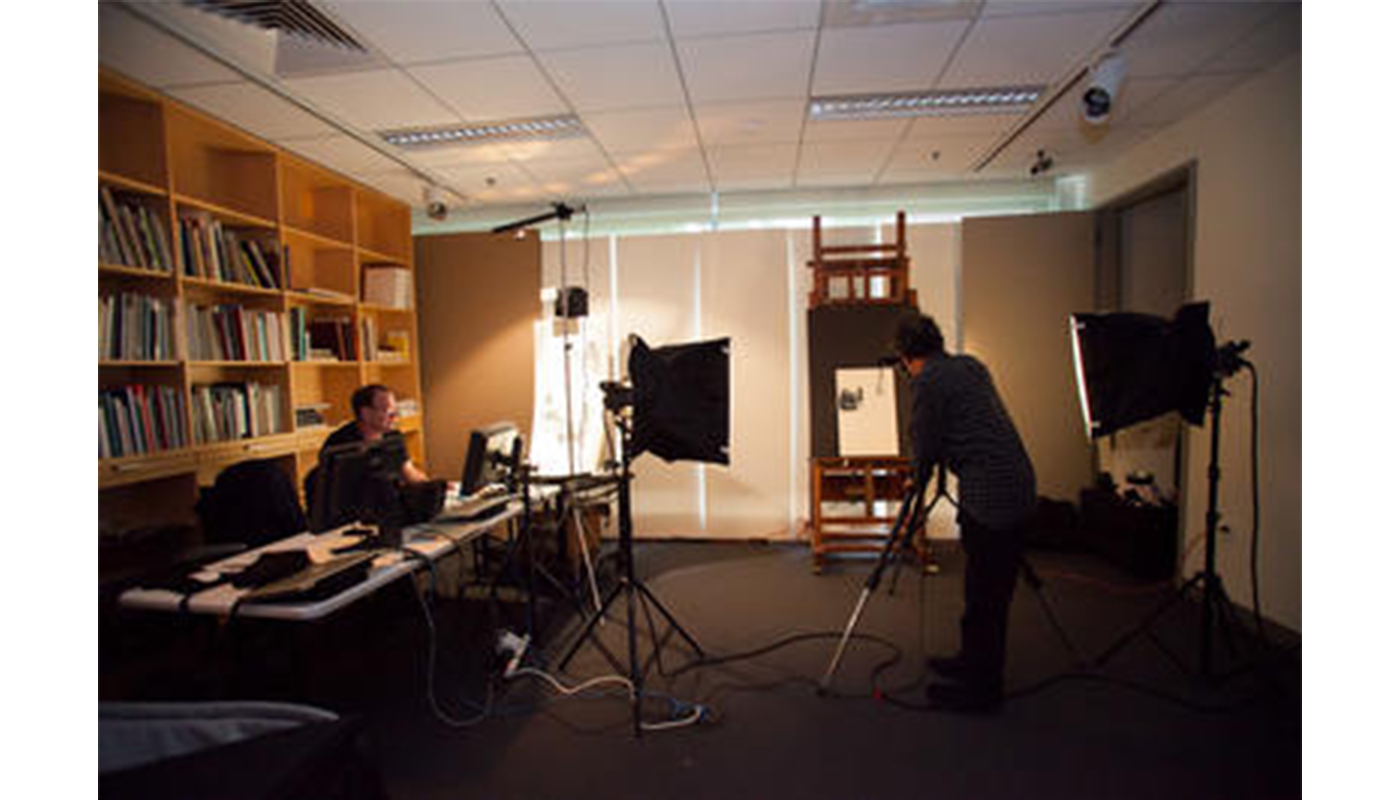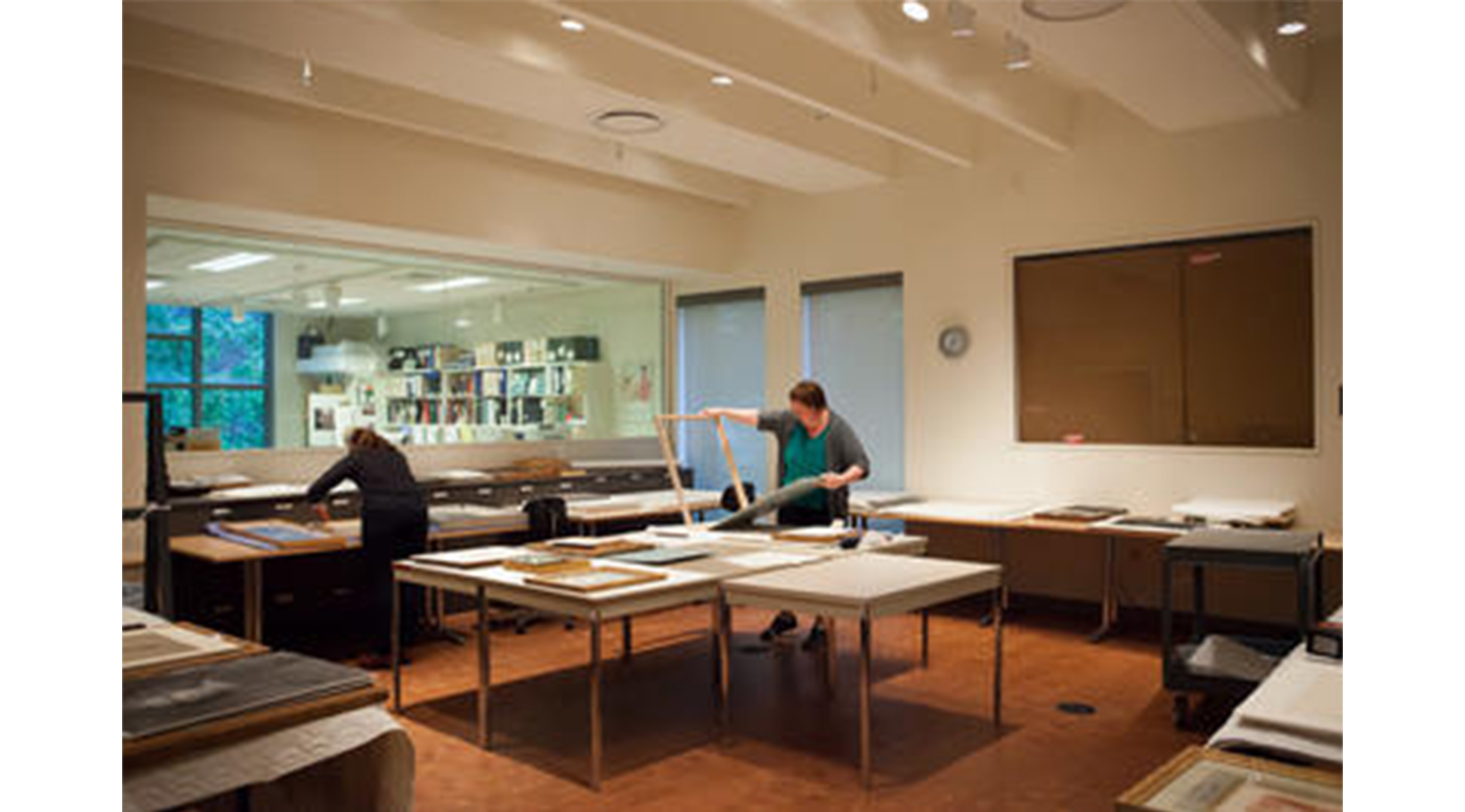
A Look at SCMA's Digitization Project
Guest blogger Kate Kearns is the Collections Management Imaging Project Coordinator for the recently finished digitization project at the Smith College Museum of Art.
The Smith College Museum of Art has just completed a two-year digitization project, funded by a grant from the Institute of Museum and Library Services. The ultimate goal of the project was to create a comprehensive and accessible digital image archive of the museum's collection. This entailed professionally photographing each work of art, color correcting each image, and creating an archival master file as well as access files. The images are made available for academic use to the Smith College community via the college's LUNA image database, and are also made available to scholars and the general public beyond Smith through ARTstor and the Five College Consortium's online collections portal.
Every six weeks or throught the course of the project, photographers Stephen Petegorsky and Jim Gipe would set up shop in the Museum's collection storage area, where they photographed a few hundred works of art over the course of a five-day session. As Project Coordinator, my role was to compile a list of works to be photographed, gather the pieces in advance of each session, and keep everything running smoothly while the photographers were on site. When we needed to photograph works of art that are particularly fragile or unwieldy, or that had to be unframed, our installation team of Stephanie Sullivan and Bill Myers stepped in to help.
With digitization of painting and sculpture completed, we took over the Cunningham Center for our final photography session in June so that we could photograph drawings, prints, and photographs that are stored framed. Most of SCMA’s works on paper are stored unframed in archival boxes, and generally they are among the easiest objects to digitize. However nearly 200 pieces on our photography list were framed, and many of these are particularly fragile and/or oversized. This made them considerably more challenging to digitize. Wherever possible we try to unframe works of art for photography, so that we can get a clear, unobstructed view of the entire sheet or canvas.

Kate Kearns (left) and Stephanie Sullivan (right) un-frame works on paper for digitization. Photo by Lynne Graves.
Unframing and then reframing works on paper is an incredibly time consuming process, and must be done with great care to avoid damaging the artwork. Stephanie and I spent many hours in the weeks leading up to the photography session reviewing our list, examining each piece, trying to anticipate where we might run into trouble. In some cases, with particularly large and fragile pieces, we decided that it was simply too risky to try to unframe them. This meant having to photograph the pieces through Plexiglas, which can be pretty tricky, but Stephen and Jim were up to the task.
The usually quiet and peaceful Cunningham Center was upended for the better part of two weeks, as photography equipment was wheeled in and frames were laid out on every available surface. I have a feeling the Cunningham Center staff didn't quite realize what they were getting into when they agreed to let us take over their space. However they did enjoy the chance to see some of the pieces outside of their frames for the first time, and we managed to unearth a few things that they’d never seen before. With over 16,000 works on paper in the collection, only a tiny fraction can ever be on view at any given time. Making digital images of these pieces available will go a long way toward making the collection more accessible, and I wouldn't be surprised if we see some of these long-hidden treasures making an appearance in the galleries some time soon!
For another peek into what past digitization efforts have revealed, read photographer Jim Gipe's blog post about the Salvador Dali playing cards that he found deep in storage.